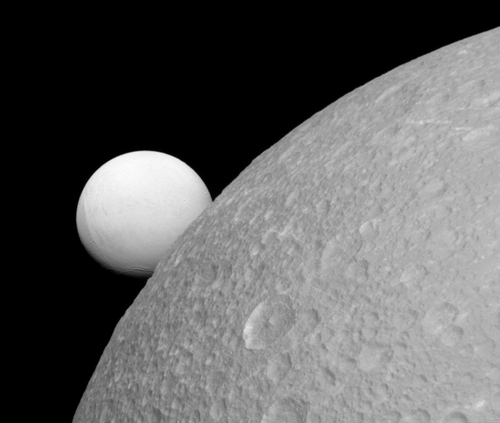Japan’s Venus probe zeros in on Dec 7 arrival
A Japanese Venus research spacecraft, dubbed Akatsuki, has completed all its preliminary course corrections and is ready for a December 7 orbital insertion attempt, the second since the spacecraft’s main engine failed during the first attempt in 2010.
The space probe accomplished its last targeting maneuver Oct. 11 to aim for its Dec. 7 arrival at Venus, and all systems are go for the encounter, said Takeshi Imamura, Akatsuki’s project scientist at JAXA’s Institute of Space and Astronautical Science. Imamura said the Akatsuki spacecraft, named for the Japanese word for dawn, will zoom 541 kilometers, or 336 miles, above Venus for a 20-minute insertion burn using the probe’s secondary attitude control thrusters. Japanese ground controllers have programmed the probe to use the backup rocket jets after a faulty valve knocked out Akatsuki’s main engine during its first attempt to enter orbit around Venus in December 2010.
Four of the eight attitude control thrusters aboard Akatsuki will fire for 20 minutes and 33 seconds to slow the spacecraft down enough for Venus’ gravity to pull it into an egg-shaped orbit that skims above the planet’s cloud tops on the low end and ranges several hundred thousand miles in altitude at peak altitude. The reaction control thrusters, originally designed to help point the spacecraft, were not rated for such a hefty propulsive maneuver.
To make this second chance possible, they have spent the last five years improvising. First they dumped the fuel from the now-useless main engine to make the spacecraft lighter so that the attitude control thrusters could handle the maneuvers. Then they used those thrusters repeatedly to adjust the course to bring Akatsuki back to Venus after it zipped past in 2010.
If they succeed in getting it in a useful orbit on December 7, it will be real triumph for these Japanese engineers.
A Japanese Venus research spacecraft, dubbed Akatsuki, has completed all its preliminary course corrections and is ready for a December 7 orbital insertion attempt, the second since the spacecraft’s main engine failed during the first attempt in 2010.
The space probe accomplished its last targeting maneuver Oct. 11 to aim for its Dec. 7 arrival at Venus, and all systems are go for the encounter, said Takeshi Imamura, Akatsuki’s project scientist at JAXA’s Institute of Space and Astronautical Science. Imamura said the Akatsuki spacecraft, named for the Japanese word for dawn, will zoom 541 kilometers, or 336 miles, above Venus for a 20-minute insertion burn using the probe’s secondary attitude control thrusters. Japanese ground controllers have programmed the probe to use the backup rocket jets after a faulty valve knocked out Akatsuki’s main engine during its first attempt to enter orbit around Venus in December 2010.
Four of the eight attitude control thrusters aboard Akatsuki will fire for 20 minutes and 33 seconds to slow the spacecraft down enough for Venus’ gravity to pull it into an egg-shaped orbit that skims above the planet’s cloud tops on the low end and ranges several hundred thousand miles in altitude at peak altitude. The reaction control thrusters, originally designed to help point the spacecraft, were not rated for such a hefty propulsive maneuver.
To make this second chance possible, they have spent the last five years improvising. First they dumped the fuel from the now-useless main engine to make the spacecraft lighter so that the attitude control thrusters could handle the maneuvers. Then they used those thrusters repeatedly to adjust the course to bring Akatsuki back to Venus after it zipped past in 2010.
If they succeed in getting it in a useful orbit on December 7, it will be real triumph for these Japanese engineers.






